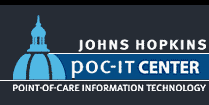|
|
Amin Sabet, M.D.
04-29-2010
Trinidad and Tobago Information Author: Lall R. Sawh, CMT., MB., BS., FRCS
- If diabetes is uncontrolled, 75% of Trinidadians with diabetes will develop ED in the first 5 years and almost all will develop after 10 years (personal data, unpublished).
- Patients who are on antihypertensive medications these can increase the risk of developing ED.
- Obesity and features of the metabolic syndrome may also contribute to the development of ED.
- Use of over-the-counter medications and herbal products are neither effective nor safe in treating ED, although they are widely used by T & T patients. This also includes the popular brew called 'bois bande' (bark of the tree Richeria grandis) and 'pacro water' (an aphrodisiac made by boiling a local crustacean).
- ED patients must consult with their doctors before using PDE5 inhibitors (such as Viagra), as they can get into serious difficulties, especially if they have a cardiac history. There have been reported deaths in this group of patients. PDE5 inhibitors are available over the counter in many pharmacies in Trinidad & Tobago.
- Failure to respond to PDE5 inhibitors prescribed by a doctor does not necessarily represent a failure of the medication. Many such patients have low testosterone levels and may benefit from supervised correction of the hypogonadism before resumption of the PDE5 inhibitor.
- Patients must be reminded that sildenafil can be ineffective if taken soon after a heavy and fatty meal and that with ALL PDE5 inhibitors sexual stimulation, usually one hour after usage, is required to maximize the effect of the medication.
- ED in T&T is often times a harbinger of cardiac events, especially in the middle-aged obese East Indians.
- Examination of the penis is critical in assessing patients with ED as many more cases of Peyronie's disease are seen now in T&T as compared to 10 years ago. Sexual accidents with trauma to the penis and minor fractures often go untreated by the patient until they present years later with the tell tale penile plaque in the corpora cavernosa and the resulting penile curvature.
- Having a radical prostatectomy, for organ-confined cancer of the prostate, does not necessarily result in ED as often a nerve sparing procedure can save a patient's erectile function. Cancer of the prostate is the commonest cancer in T&T men > 45 years.
- Impaired ability to achieve or maintain an erection sufficient for satisfactory sexual activity
- General population: common condition with prevalence increasing from 5.1% (prior to age 40) to 70.2% (after age 70).
- Diabetes: over age of 20 years, age-adjusted prevalence of erectile dysfunction (ED) is 38.6% in men with diabetes versus 18.4% in men without diabetes (Selvin).
- Associated conditions: neuropathy (peripheral, autonomic), retinopathy, poor glycemic control, longer duration of diabetes.
- ED is an independent predictor of CAD and adverse cardiac events in diabetes (2 times greater risk) (Gazzaruso).
- Multifactorial pathophysiology of ED in diabetes: endothelial/smooth muscle dysfunction, autonomic neuropathy, hypogonadism, psychological/interpersonal factors, anti-hypertensive medication side effects (e.g. diuretics, beta-blockers).
- History: libido (correlates with androgen function), medication use (SSRIs, spironolactone, clonidine, thiazide diuretics, beta-blockers, ketoconazole, cimetidine), illicit drug use, onset of symptoms (rapid onset suggests psychogenic).
- Exam: visual fields (defects with pituitary macroadenomas causing hypogonadism), pulses (femoral, peripheral), gynecomastia (seen in hypogonadism), testes, penile plaques (Peyronie's disease).
- Laboratory testing: HbA1C, testosterone, prolactin, TSH
- Other testing: postage stamp and snap gauge testing have been largely replaced by devices such as the Rigi-Scan, which provide more accurate and reproducible information about nocturnal rigidity and tumescence.
- Complete lack of nocturnal/morning erections on nocturnal penile tumescence testing suggests neurologic or vascular disease.
- Poor glycemic control is associated with ED, but evidence is insufficient to show that improved glycemic control reverses ED.
- Androgen therapy is appropriate for hypogonadal patients with ED
- 1st line: PDE5 inhibitors (sildenafil, vardenafil, tadalafil)
- 2nd line: Vacuum-assisted filling devices
- 3rd line: Transurethral or intracavernosal PGE1 (alprostadil)
- 4th line: Surgical implantation of penile prosthesis
- PDE5 inhibitors contraindicated in men taking nitrates; may be hazardous in setting of cardiac ischemia, heart failure, and use of CYP3A4 inhibitors (decrease drug clearance) or alpha-adrenergic antagonists (possible hypotension)
- Rare reports of non-arteritic anterior ischemic optic neuropathy in setting of PDE5 inhibitor use; causal relationship not established.
- Consider urology referral, especially for patients refractory to PDE5 inhibitor therapy.
- PDE5 inhibitors improve ED in the majority of patients with type 1 and type 2 diabetes (Rendell) and should be tried first, although may be relatively less efficacious than in men without diabetes.
- Caution is advised regarding concomitant use of PDE5 inhibitors with alpha-blockers as the combination of these two vasodilator medications may result in hypotension.
- Psychological factors contributing to ED may include depression, performance anxiety, and relationship (including marital) problems.
- Psychosexual counseling may be useful as an adjunct to pharmacologic therapy (Melnik).
|
|

